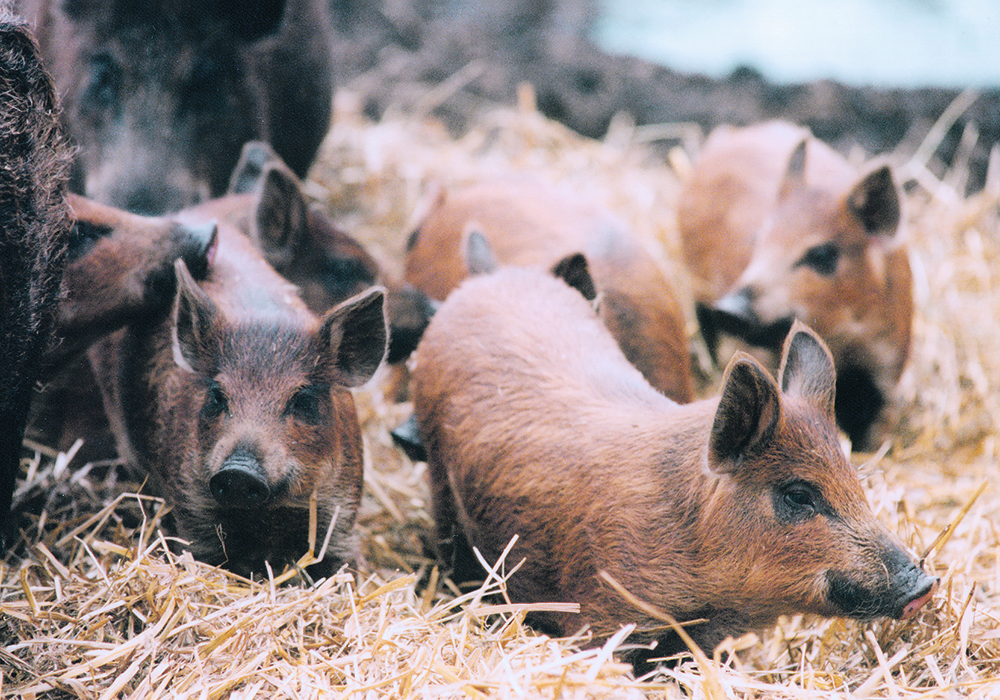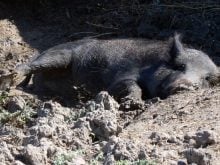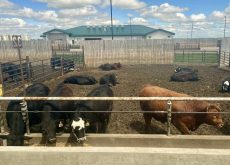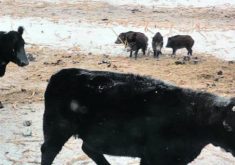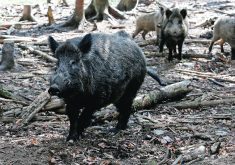Current operators have about six months to comply with new regulations, but a researcher says a moratorium is too late
REGINA — A moratorium on wild boar farms will help Saskatchewan better deal with the threat of African swine fever and other diseases, the provincial government said.
However, University of Saskatchewan researcher Ryan Brook said it’s far too late to control the feral population.
The moratorium was announced in a package of new regulations under the Animal Production Act passed in 2022 and is effective Jan. 1, 2025.
Read Also

New program aims to support plant-based exports to Asia
Understanding the preferences of consumers in Taiwan and how they differ from Indonesia or Malaysia isn’t easy for a small company in Saskatchewan.
The regulations also require all existing operations to be inspected and licensed by that time.
Other requirements include annual inspections, enclosure/fencing standards, reporting any escapes from captivity and maintaining records.
“Sask Pork is pleased to see the province’s commitment to regulate wild boar farms,” chair Toby Tschetter said in a news release.
“The new oversight of these operations will position the province and the pork industry to better respond to wild boar escapes and potential animal disease outbreaks.”
African swine fever is a major concern in North America. For years, governments and agencies have been working to establish preparedness and response plans.
Industry and governments fear if the disease were to get into feral pigs, it could decimate domestic hog production.
The province is aware of 15 wild boar farms now, but there could be many others because they haven’t been required to get a licence.
Brook said there is little market for wild boar these days, and a moratorium will likely have little effect. Boar have been escaping from meat and hunt farms for more than 40 years.
“The market peaked in 2001, then crashed to the point where you couldn’t give them away, so many wild boar farms cut their fences and let them go,” he said.
“This latest announcement is the ultimate example of way too little and way too late. This could have been very effective 40 or even 20 years ago but will be of little help at this point. The genie got out of the bottle during the time that Cheers was a popular TV show.”
Brook said regulations are good, but only if they are enforced. In Manitoba, farmers are not licensed and openly sell products.
Another problem is that wild boar were purposely crossed with domestic pigs to create a bigger animal with a reproductive rate of six pigs per litter and at least two litters a year, he said.
Escaped domestic pigs also bred with wild boar to create hybrid super pigs that are incredibly invasive and well-established in Saskatchewan.
He called the province a “high-functioning wild pig factory” that supplies feral pigs to neighbouring jurisdictions.
Existing wild boar farms are generally small and easy to manage, he said, while hunt farms are larger and “leaky.”
“Locals tell hunters, ‘save your money and hunt around the outside of the fenced wild boar shoot farms. They are constantly getting out,’ ” he said.
Brook added a science-based wild pig management strategy is required.
Kathryn Tonita, director of livestock development with the agriculture ministry, said wild boar farms will now be more like game farms in that they will report animal counts.
“Even though we didn’t license them previously, there are some wild boar operators in the province that did ask for inspections,” she said.
Farms that operate out of compliance will be subject to enforcement and can be shut down, Tonita said.
The regulations announced last week also govern domestic game farming, fur farming, domestic meat inspection, milk compositional standards, livestock inspection and transportation, animal identifiers, premises identification, stray animals (livestock specific), animal keeper’s liens and livestock dealer licensing.
Tonita said the language regarding livestock manifests and permits has been updated. Livestock permits are now called inspection certificates.
“Within the regulations, they’re just better defining when a producer uses a manifest versus what is now called an inspection certificate,” she said.
Livestock Services of Saskatchewan chief executive officer Jason Pollock said the changes “will allow LSS to communicate more clearly with its stakeholders as well as guide our support and enforcement services to the industry in a more straightforward manner.”
The regulations have been designed to account for a change to electronic manifests, added Tonita.
Animals in transport must have documentation specifying the premises identification numbers for both origin and destination.
Changes on manifests won’t be seen until Jan. 1.
The ministry has updated stray animal requirements so rural municipalities can collect fees based on actual costs. Tonita said fees had been set out in a table and didn’t always cover costs. Now fees can be charged back to the owners.
She said there are no fee or licensing cost increases as a result of the regulations, with the exception of stray animals.
The new single set of regulations replaced 10 sets, and the new act replaced four: the Animal Identification Act, the Animal Products Act, the Line Fence Act and the Stray Animals Act.




